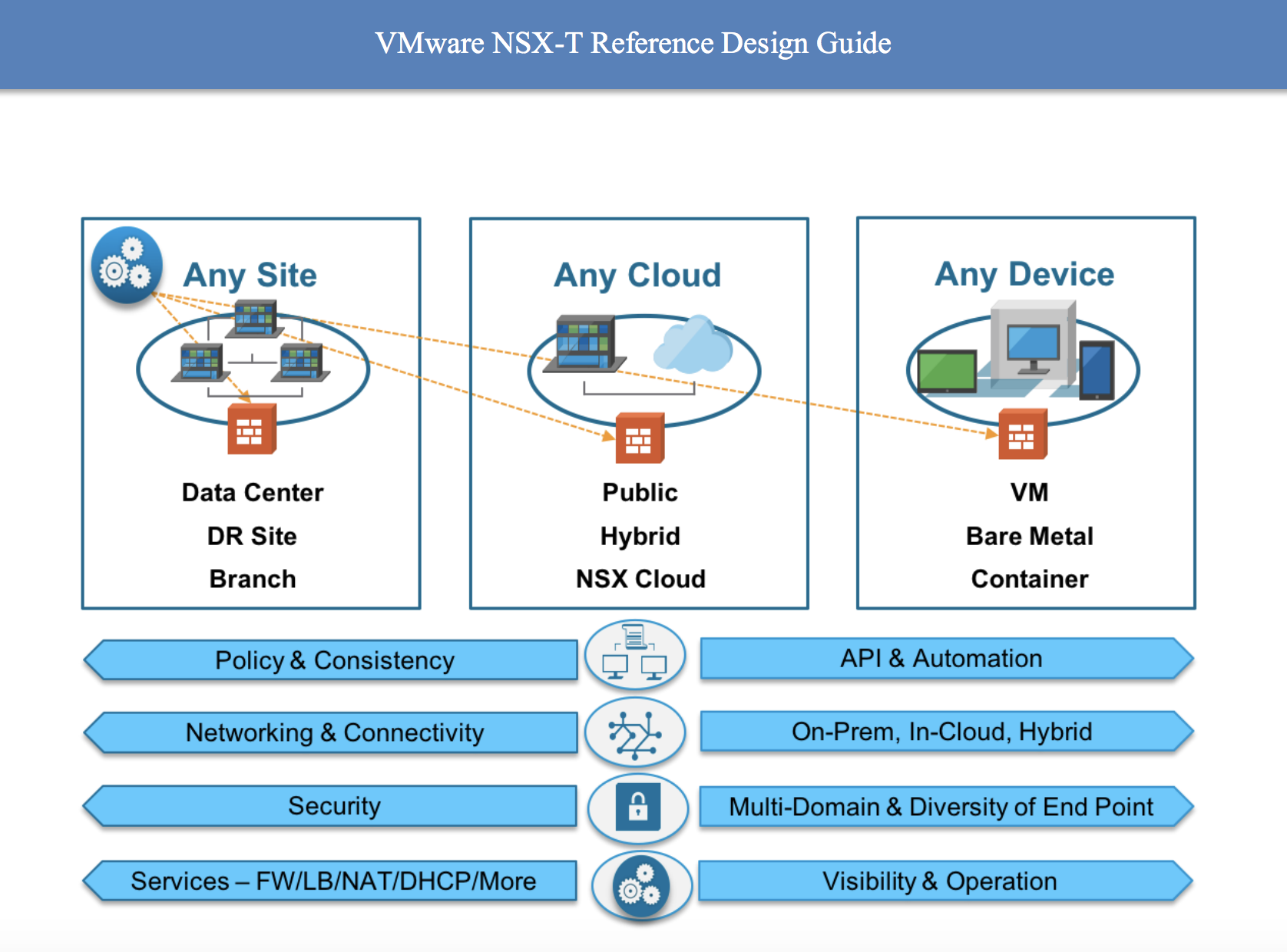
I know it’s tough to digest more NSX terms with VMware rapid release of the products around SDN & Cloud areas. In simple terms, there are two NSX flavors available one gets installed along with VMware products (NSX) and other is vendor independent (NSX-T). Both are suitable for Data Center and VMware now renamed NSX-T as NSX-T Data Center. In much the same way that server virtualization programmatically creates, snapshots, deletes and restores software-based virtual machines (VMs), NSX-T Data Center network virtualization programmatically creates, deletes, and restores software-based virtual networks.
With network virtualization, the functional equivalent of a network hypervisor reproduces the complete set of Layer 2 through Layer 7 networking services (for example, switching, routing, access control, firewalling, QoS) in software. As a result, these services can be programmatically assembled in any arbitrary combination, to produce unique, isolated virtual networks in a matter of seconds.
NSX-T Data Center works by implementing three separate but integrated planes: management, control, and data. The three planes are implemented as a set of processes, modules, and agents residing on three types of nodes: manager, controller, and transport nodes.
- Every node hosts a management plane agent.
- The NSX Manager node hosts API services. Each NSX-T Data Center installation supports a single NSX Manager node.
- NSX Controller nodes host the central control plane cluster daemons.
- NSX Manager and NSX Controller nodes may be co-hosted on the same physical server.
“Be social and share this on social media, if you feel this is worth sharing it”



